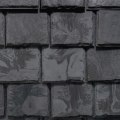Built-up roof systems are one of the most reliable, durable, and cost-effective solutions for commercial roofing. These systems are composed of multiple layers of asphalt and felt that are secured with hot asphalt or cold adhesive. This combination of materials provides a strong, water-resistant barrier that can last up to 40 years with proper maintenance. When it comes to choosing a roofing system for your commercial building, it is important to understand the benefits and drawbacks of built-up roof systems.
In this article, we will discuss everything you need to know about built-up roof systems, including their advantages and disadvantages, installation process, and maintenance requirements.
Potential Issues with a Built-Up Roof System
A built-up roof system is a reliable and economical choice for commercial buildings, but there are potential issues that can arise. The most common problems include ponding water, cracking, and weathering.Ponding Water
Ponding water occurs when water accumulates in certain areas of the roof due to poor drainage, which can eventually cause the underlying roof materials to deteriorate. To avoid this issue, make sure that your roof is designed with proper drainage and that all gutters, downspouts, and drains are working properly.CrackingCracking can occur over time due to expansion and contraction of the roof materials due to temperature changes. Regular maintenance and inspections can help identify any potential issues with the roof before they become a problem.
Weathering
The sun's UV rays can cause the asphalt in a built-up roof system to deteriorate over time, resulting in cracks, splits, and exposed seams. Regular inspections and maintenance will ensure that any problems with the roof are identified and addressed before they become a major issue.How to Prolong the Life of a Built-Up Roof System
A built-up roof system can provide excellent protection for commercial buildings, but proper maintenance is key to ensuring it lasts as long as possible.The following tips can help you prolong the life of your built-up roof system: Inspect the roof regularly: Regularly inspect the roof to identify any potential issues and address them quickly. If you notice any loose materials, peeling, blistering, or any other signs of damage, contact a professional to take a closer look.
Clean the roof:
Cleaning the roof is also important. Removing any debris can help prevent water and ice build-up that can lead to damage.Check for leaks: Check for any leaks in the roofing system and address them immediately. Sealing any cracks or gaps can help keep water from seeping into the building and causing further damage.
Repair and replace materials:
Repair or replace any damaged materials as soon as possible. This can help prevent further damage from occurring.Use protective coatings: Consider applying a protective coating every few years to help protect the roof from UV radiation and other elements. This is especially important in areas with extreme temperatures or high levels of humidity.
Benefits of a Built-Up Roof System
A built-up roof system is an economical and reliable choice for commercial buildings. It offers a number of benefits, including cost effectiveness, durability, ease of installation and maintenance, and protection from weather and other damage. The cost effectiveness of a built-up roof system is one of its greatest benefits.This system is typically less expensive than other types of commercial roofs, making it an attractive option for businesses looking to save money. In addition to being cost effective, a built-up roof system is also highly durable. The multiple layers of asphalt, tar, and other materials provide superior protection from the elements and the wear and tear of daily use. This means that the roof can last for many years with minimal maintenance.
The installation and maintenance of a built-up roof system are also relatively easy. The system is designed to be installed quickly and with minimal effort, so businesses can get their roof up and running in no time. Additionally, the materials used are easy to repair if they become damaged or worn over time. Finally, a built-up roof system provides superior protection from weather and other damage.
The multiple layers of material act as a barrier between the building and the elements, helping to keep the building safe and secure for years to come.
Materials Used in a Built-Up Roof System
A built-up roof system is composed of multiple layers of asphalt, tar, and other materials that are applied in layers to protect the building from weather and other damage. Asphalt and tar are the primary materials used in a built-up roof system. Tar paper is laid down as the first layer, followed by multiple layers of asphalt.Gravel is then applied on top of the asphalt to create a protective barrier against UV rays and weather elements. Asphalt is a black, sticky material that is used to seal and waterproof the roof. It is applied in layers, with each layer being heavier than the last. Asphalt helps to create a barrier between the roof and the elements, providing protection against moisture, wind, and other weather elements.
Tar paper is laid down first before the asphalt is applied. It serves as an additional layer of protection against moisture and wind. Tar paper also helps to hold the asphalt in place and prevent it from shifting or cracking. Gravel is then added on top of the asphalt to provide a protective covering against UV rays and other weather elements.
The gravel also helps to disperse heat, keeping the roof cooler during hot weather. These materials are all essential components of a built-up roof system, as they work together to create a reliable, durable protection against weather and other elements. Asphalt, tar paper, and gravel are all easy to maintain and repair when necessary.
Installation Process for a Built-Up Roof System
Installing a Built-Up Roof SystemA built-up roof system is installed by a professional roofing contractor, and the installation process typically takes several days to complete. The first step is to prepare the roof surface by removing any existing materials, such as shingles or tar paper, and ensuring that the surface is clean and level.Once this is done, the contractor will install a base layer of asphalt, tar, or modified bitumen, followed by layers of felt and insulation. The number of layers will vary depending on the specific needs of the building. The contractor will then install the waterproofing membrane, typically made of asphalt or modified bitumen. This membrane is applied in several layers, with each layer heated and rolled into place. The contractor will also install flashing around any penetrations, such as vents and pipes, to ensure that water does not seep in from these areas.
Finally, the contractor will add a final layer of gravel or other protective material to help protect the roof from UV rays and other damage.
Safety Precautions for Installing a Built-Up Roof System
The installation of a built-up roof system involves working with hot asphalt and other materials, so it's important to take safety precautions to ensure that no one is injured during the installation process. It's important to wear protective gear such as gloves, goggles, and long sleeves when working with hot asphalt. Additionally, it's important to ensure that any ladders or scaffolding are placed securely to prevent falls. The contractor should also be aware of any potential fire hazards when working with hot asphalt.Maintenance Requirements for a Built-Up Roof System
A built-up roof system is designed to offer superior protection from weather and other damage.However, it is important to regularly inspect and maintain your built-up roof system in order to ensure its longevity and effectiveness. There are several different types of maintenance that should be done on a regular basis to ensure the system is functioning properly.
Inspections:
Regular inspections are critical for identifying any potential problems or damage to the system. A qualified contractor should be hired to inspect the roof system at least once a year, preferably twice a year.They will be able to identify any weak spots or areas that need to be addressed.
Repairs:
If any damage is found during an inspection, it should be repaired immediately. This includes repairing any cracks, gaps, or holes in the system. If left unaddressed, these issues can lead to leaks and other problems.Replacements: As built-up roofs age, they may need to be replaced in order to maintain their effectiveness. This includes replacing any layers that have worn out or become damaged. It is important to hire a qualified contractor to handle the job, as they will be able to ensure the replacement is done correctly. By following these maintenance tips, you can ensure that your built-up roof system remains in top condition and provides you with the protection you need.










